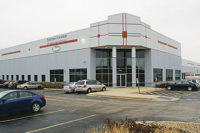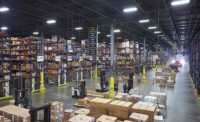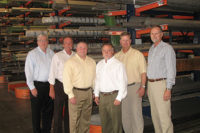There is nothing that dampens momentum quicker than pulling into a Sam’s Club or Costco parking lot on a Saturday morning.
Without fail, these parking lots are swarming with determined shoppers, ready to fill their carts with bulk food and household essentials. If you like walking long distances, this is the place to be.
If you think about it, the reason those lots are full is rather elementary. These types of “wholesale” stores offer in-stock items that can be purchased in bulk at competitive prices. I'm a big fan of buying paper towels there because you get more towels for a better price than traditional retailers.
A great assortment of in-stock items plus competitive pricing equals a recipe for success.
I see a lot of similarities in the excitement that occurs at these stores on a Saturday and what happens at master distribution companies in our industry.
PHCP and PVF masters provide readily available items at competitive prices with the latest in over-the-top customer service strategies sprinkled on top. It's why the role of the master distributor has taken on even more meaning in current day where their customers are carrying less inventory, but still need that just-in-time fulfillment.
This issue is our annual look at master distribution, headlined by my profile on Southern California-based Smith-Cooper International. Instead of referring to itself as an industrial fittings and valve master distributor, President Bob Cooperand his crew use the term “producers” as a reflection of Smith-Cooper’s dual manufacturing and distribution functions. You’ll quickly realize this company leaves no stone unturned in the quality and service departments.
In addition, our annual master distribution trends storycan be found in this issue. A common thread in my talks with masters this time around is the vast amount of new programs and strategies being put in place to help best provide that critical just-in-time delivery that keeps customers coming back.
For example, Kessler Sales & Distribution recently upgraded from a CRM platform to a system that fully integrates with its database and provides the company's salespeople with a dashboard. “A better-informed salesperson is more likely to be better tuned into the specific needs of each individual customer,” Kessler Vice President and General Manager Tim Hagansays.
St. Louis, Mo.-based industrial PVF master distributor Service Metal has added sales staff and has contracted a third-party IT firm to assess the company’s abilities in that arena and see where process and efficiency increases can be made. Vice President-Controller Tim Williamsonadds the company’s St. Louis machine shop has the ability to make in-house modifications for faster processing, while manpower has been dedicated to assist customers in retrieving mill test reports.
“We are committed to building a better experience for our customers,” Williamson says. “Processing quotes and orders efficiently allows supply houses to better serve the end user and keep crews working, not standing around for material.”
Ernie Coutermarshsays master distribution at New England-based CD Sales is all about inventory availability in an urgent timeframe.
“In an MRO universe where unplanned events create an immediate need at the end users, master distributors are the best source,” he says. “The end user has reduced or eliminated stockroom inventory and product manufacturers have little or no inventory and long lead times. Master distribution is a function and we manage it to be the most efficient and effective solution in an unpredictable and urgent demand environment.”
Industry veteran Robert Vick, who retired from industrial PVF master Industrial Valco at the end of 2014, notes a drastically changed wholesale landscape has painted a much different, yet positive picture for masters.
“It used to be master distribution was a side bar to the supply chain,” he wrote to me in an email late last year. “This was when wholesalers’ inventories were based on the age-old philosophy of ‘you can’t sell from an empty wagon.’ If you had to purchase a product from a master it was because your purchasing manager didn’t have enough of that product in stock. Master distributors were looked at as a necessary evil.
“Today, wholesalers are trying to be more things to more people. Consequently their same dollar of inventory is spread over many more items than before as they try to service more markets. Holes in their inventory appear more often, therefore the growing need for the master distributor. Today master distribution is no longer just a side bar, but has become an integral part of the distribution channel.”
And a happy distribution channel means happy customers.
HELPFUL LINKS:





